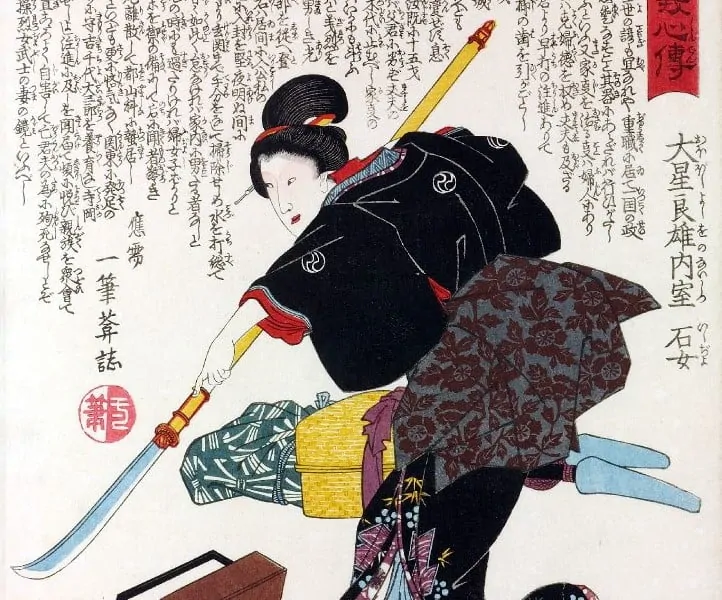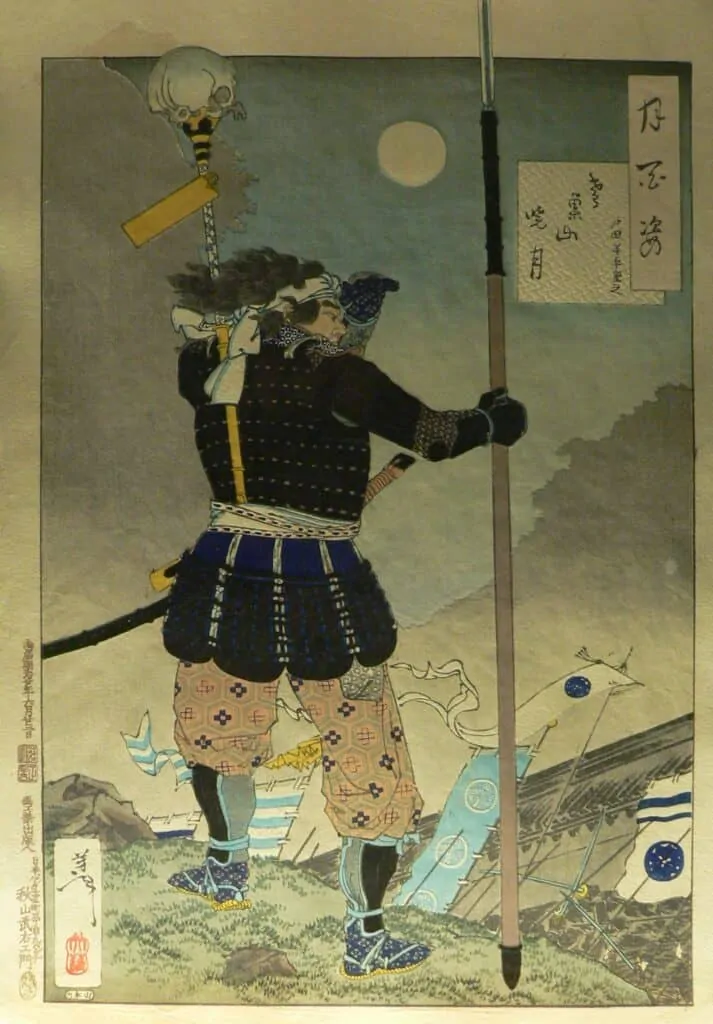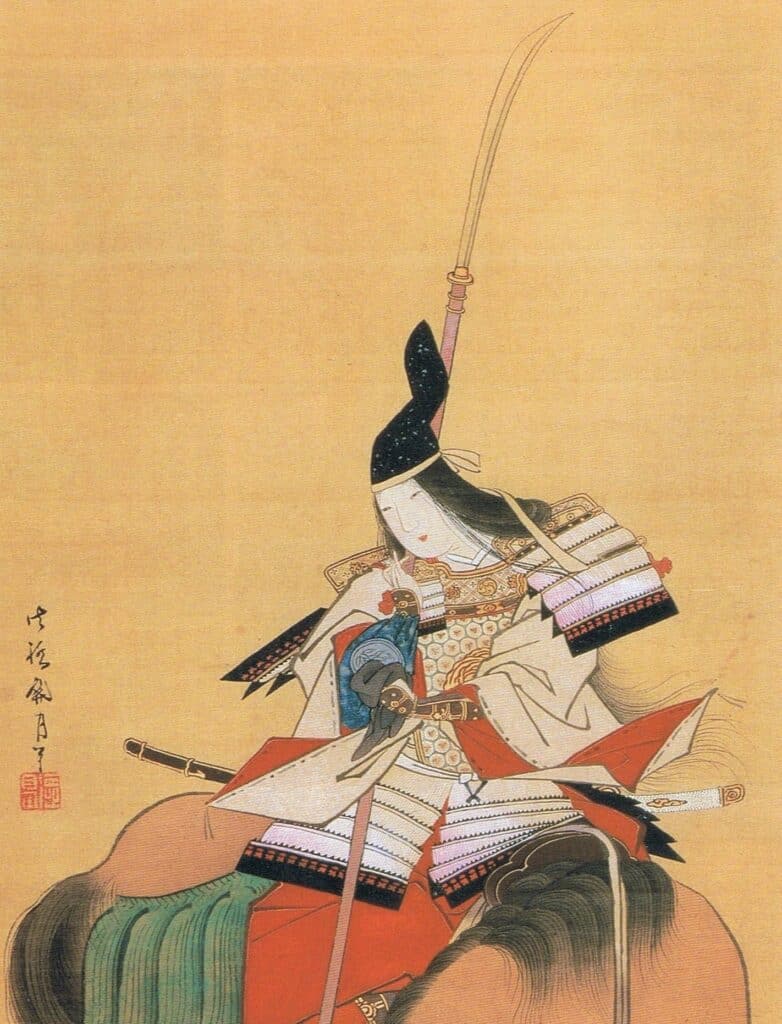
The Japanese had very few choices when it comes to spears and polearms. Both of these categories only contain one weapon each. Namely the yari and the naginata.
Both of these weapons are very deadly and special, so it’s worth taking a closer look at them.
Table of Contents
Yari

The yari is a Japanese spear with a total length of around 2.5 meters (8.2 ft). Yari have been derived from Chinese spears and were “invented” in the Nara Period (710-794 AD).
The blade is typically around 30 to 80 cm (11.8 to 31.5 in) long. The spear has a very long tang that is inserted into the hollow part of the handle.
This makes the weapon very durable. The pole is around 180 to 240 cm (5.9 to 7.9 ft) long.

There are a lot of variations with different cross-sections and some even have additional horizontal blades (for example the jumonji yari). It is also common to have a scabbard (saya) for the blade.
To top it off here is a brief history of the yari. At first, using spears was extremely rare in Japan and samurai were mainly fighting with swords such as the tachi.
Not until the 15th century the yari became widely used. This change most likely occurred due to the Mongol invasions in the year 1274 and 1281.
When fighting armies, spears and polearms (as the yari and naginata) outperform swords (which are better in duels but still used as a sidearm in battle).
The increased reach, better armor penetration and lower weight proved to be advantageous.
In the end, the yari become probably the most popular weapon and even surpassed the longbow (yumi), which was formerly extensively used by the samurai and foot troops (ashigaru).
With the rise of the peaceful Edo era spears, polearms and archery weren’t of great needed anymore.
Dueling became more common again and samurai switched back to swords such as a katana and wakizashi as main weapons. Thus, the yari was eventually phased out.
Naginata

The naginata is a Japanese pole weapon with a length of around 2.2 meters (7.2 ft). Originally it was used by the samurai, ashigaru and sohei (warrior monks).
The weapon is made of a wooden pole with a single-edged blade. It is similar to a Chinese guandao or a European glaive.
Like the katana, a naginata features a round guard (tsuba). Same as with the yari the naginata has a very long tang that is inserted in the oval-shaped pole.
The length of the blade is around 30 to 60 cm (11.8 to 23.6 in) and the pole measures 120 to 240 cm (3.9 to 7.9 ft).
When not in use the blade was covered in a wooden scabbard (saya). Now let’s move on to a short history of this weapon.
The naginata is a development of the yari which came into being in the early 12th century AD. It quickly became very popular as it proved a good counter against the increasingly common cavalry battles.
With the introduction of the Portuguese tanegashima (matchlock) the naginata became less and less popular and was eventually overtaken by the yari.
In the Edo period, the naginata and yari became almost extinct. However, the naginata was still used as a self-defense weapon for noblewomen (onna-bugeisha).
The naginata used by men were called ō-naginata and the shorter/lighter ones which were used by women were called ko-naginata.
Conclusion
I really hope you liked today’s article about the types of Japanese spears and polearms. In my opinion, the yari and naginata are very impressive weapons.
Make sure to share this article with your friends and leave your thoughts on those blades in the comment box below.